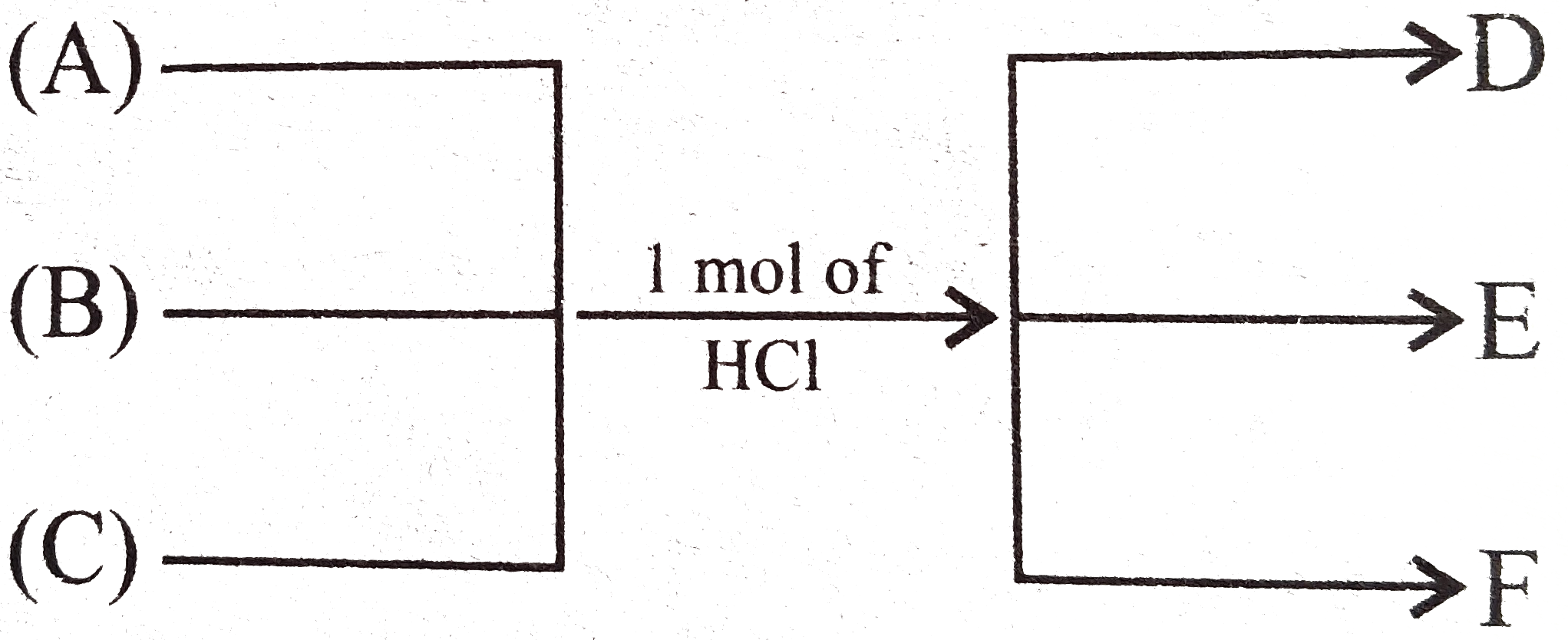i. (A), a compound with lowest number of C atoms, is unsaturated hydrocarbon and is optically active.
ii. (B), a compound with lowest number of C atoms, is unsaturated hydrocarbon and shows diastereomerism.
iii. (C), a compound with lowest number of C atoms and unsaturated hydrocarbon, shows both optical and geometrical isomerism.
Following is the reaction sequence of A, B, and C.

The structure of compound (A) is:
A

B
H−≡−≡−H
C

D
=−=
Video Solution
Text Solution
The correct Answer is:A
|
Topper's Solved these Questions
- ALKYNESBOOK - CENGAGE CHEMISTRYCHAPTER - ALKYNESEXERCISE - Exercises (Multiple Correct Answers Type)
25 Videos
- ALKYNESBOOK - CENGAGE CHEMISTRYCHAPTER - ALKYNESEXERCISE - Exercises (Single Correct Answers Type)
30 Videos
- ALKYNESBOOK - CENGAGE CHEMISTRYCHAPTER - ALKYNESEXERCISE - Exercises (Subjective Type)
31 Videos
- ALKENES AND ALKADIENESBOOK - CENGAGE CHEMISTRYCHAPTER - ALKENES AND ALKADIENESEXERCISE - Single correct Answer
14 Videos
- APPENDIX - INORGANIC VOLUME 1BOOK - CENGAGE CHEMISTRYCHAPTER - APPENDIX - INORGANIC VOLUME 1EXERCISE - chapter-7 Single correct answer
1 Videos
Similar Questions
Knowledge Check
An unsaturated hydrocarbon
Acontains six carbon atomsBcontains fewer hydrogen atoms than is needed for carbon to have its usual valency of fourCcontains excess hydrogenDcontains a chain of carbon atomUnsaturated hydrocarbon contains
Asingle and double bondsBonly double bondsConly triple bondsDdouble and triple bondsUnsaturated hydrocarbon contains
Asingle and double bondsBonly double bondsConly triple bondsDdouble and triple bonds

